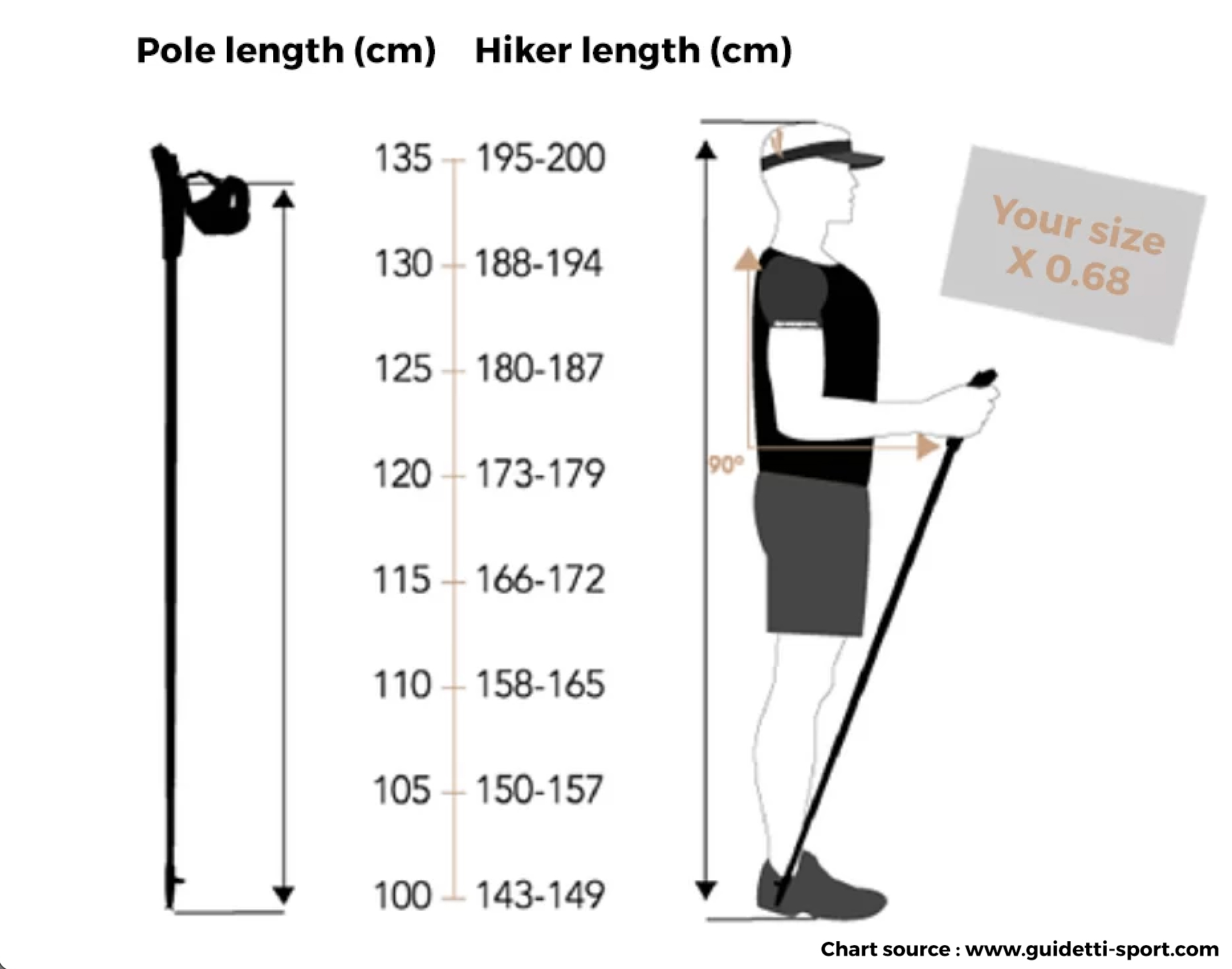Let’s begin by pointing out that Nordic walking and hiking are two different disciplines, both of which require specially adapted poles.
Nordic walking is generally performed on flat or slightly undulating terrain while hiking is done on steeper land with significant differences in altitude. Consequently, both activities require different types of walking poles.
👉 Nordic walking poles are designed to help propel the body forward and engage the upper body muscles. Nordic walking poles are often shorter than hiking poles and are equipped with wrist straps for releasing and catching the poles, which constitutes the main motion of this discipline. Nordic walking poles are also lighter and more flexible than hiking poles.
👉 Hiking poles, on the other hand, are designed to provide support and stability on uneven terrain. They are generally longer than Nordic walking poles and are equipped with a simple strap that fits around the wrist. These are also stiffer and heavier, making them more resistant to steep terrain.
👉 Adjustable or fixed poles?
Adjustable, telescopic Nordic walking poles can be purchased. These can be adapted to your height and are also easier to carry and store.
Depending on the materials, some models (particularly those made of aluminum) may feature more delicate adjustment mechanisms than single strand poles. In addition, some models, again depending on their material, may be less resistant to vibration due to their two-part construction.
👉 Choosing the right material
Selecting the right material for your Nordic walking poles is extremely important, as it influences both their performance and comfort of use.
Poles made of carbon, which is a blend of epoxy resin, carbon fibre and glass, offer greater rigidity, lightness and strength. Their cost will vary according to the percentage of carbon used.
They reduce vibrations and deliver maximum comfort of use. We recommend choosing Nordic walking poles that combine two materials, such as fibreglass and carbon, or aluminum and carbon, to limit the vibrations transmitted to elbows and arms during regular, intensive use. This combination also adds to the strength and durability of the poles.
In fact, a higher ratio of carbon means better absorption of vibrations and higher quality.
Although cost-effective, 100% aluminum poles are not able to absorb as much vibration, which can lead to joint pain and tendonitis over a prolonged period.
👉 Finding the right pole length
Your poles should be adapted to suit your body type and intended use. In general, your arms should be almost straight out to a 90° angle when the poles are placed on the ground.

For greater comfort, you may also consider purchasing accessories such as carabiners, handles, interchangeable tips and so on.
Here are just a few examples of retailers offering all these products:
https://www.decathlon.ca/en/c/22511/hiking-poles
https://www.sportsexperts.ca/en-CA/all-sports/atmosphere-outdoor-activities/hiking/trekking-poles
https://www.mec.ca/en/products/camping-and-hiking/trekking-poles-and-accessories/c/1510
https://www.lacordee.com/en/camping-and-hiking/trekking-poles-accessories?page=1
Enjoy your walk 😉
